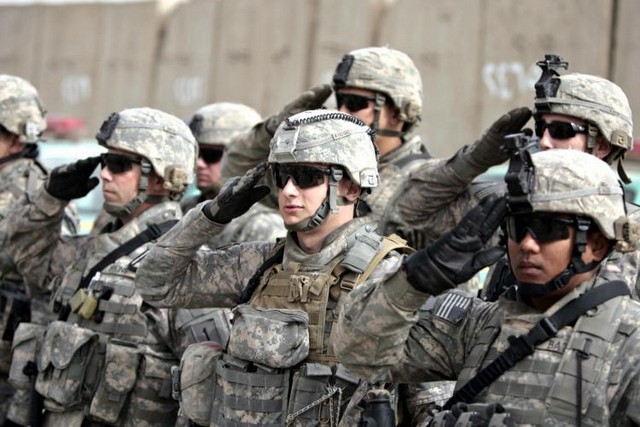By Bill Van Auken
For the first time since the redeployment of US troops to Iraq, American military “advisers” have reportedly engaged in combat with elements of the Islamic State of Iraq and Syria (ISIS) in the country’s embattled western Anbar Province.
The reported combat involved US troops based at Anbar’s al-Assad military base fighting alongside Iraqi army forces to drive back an ISIS attack on the town of al-Baghdadi. Al Jazeera cited the testimony of an Iraqi officer, First Lieutenant Muneer al Quod, who reported the fighting.
Reports of the battle described fighting as fierce, with multiple casualties on both sides. The ISIS forces were dislodged from the town only after several hours of clashes.
An unnamed senior US military officer was quoted by the Bloomberg news agency as saying that no US ground troops are fighting in Iraq, although American forces are authorized to act in self-defense as required. The officer insisted that the mission for the US forces in Iraq is “to prepare and support the country in fighting Islamic State forces, and no engagement with militant forces was being tracked.”
While such operations may not be “tracked” by the Pentagon for purposes of informing the public, the testimony of the Iraqi officer exposes the fact that they are taking place.
All the claims that US forces are merely “trainers” and “advisers”—not combat troops—and only act in self defense amount to carefully crafted semantics designed to conceal the political fact that, three years after proclaiming an end to all US military operations in Iraq, the Obama administration has launched a new war in which US troops are once again carrying out combat operations.
The reports of US soldiers engaging in combat came as it was announced that the main element of the 1,500 more US troops that President Barack Obama ordered to Iraq in the immediate aftermath of the midterm elections will be drawn from the 82nd Airborne Division’s 3rd Brigade Combat Team based at Fort Bragg, North Carolina. One thousand paratroopers from the brigade are supposed to be deployed in January. They are in addition to a 250-member unit from the same brigade, whose deployment was announced in early December and is expected to begin by the end of the month. Each of these deployments is supposed to last for nine months.
In a statement released after the first deployment was announced, the brigade’s commander, Col. Curtis Buzzard, said those being sent were from a “well-led and highly trained unit with extremely talented and adaptable paratroopers. I know they are ready for any contingency and am confident they will accomplish the mission.”
The 82nd Airborne, which specializes in parachute assault operations, was among the main combat units used in the invasion and occupation of Iraq. Its actions in Anbar province in the early days of the occupation included the April 2003 killing of 20 unarmed residents of Fallujah who had attempted to protest against the American troops occupying a local school. The massacre provoked popular resistance, which led to subsequent US sieges that demolished most of the city, killed thousands and reduced Fallujah’s population by at least 60 percent.
The announcement of the US military buildup came amid heavy fighting around the town of Sinjar in northwestern Iraq. Kurdish Peshmerga forces, reportedly numbering as many as 8,000, carried out one of the biggest operations since ISIS conquered one-third of the country beginning last June.
The Kurdish offensive was preceded by an intensive US air bombardment involving some 50 air strikes. It reportedly wrested the town of Sinjar from ISIS, though there were some reports of continuing fighting. It also ended ISIS control over the Sinjar mountains, scene of an earlier siege that trapped members of the Yazidi religious minority. It was “humanitarian” relief of this siege that was invoked as the pretext for beginning US air strikes last August. Afterwards, Washington’s concern for the Yazidis quickly faded.
Meanwhile, the profit interests served by the new US war were made plain in a pair of announcements by the State Department last week. The first revealed the approval of a proposed sale to Iraq of up to $2.4 billion in M1A1 Abrams tanks, produced by General Dynamics. The second authorized the sale to the regime in Baghdad of $579 million worth of up-armored Humvees made by AM General. Similar weaponry was supplied in the US endeavor to rebuild and train the Iraqi army during the nearly nine-year American occupation of the country. Much of that equipment ended up in the hands of ISIS in the debacle last June, which saw the US-trained forces disintegrate in the face of ISIS attacks.
23 December, 2014
WSWS.org

